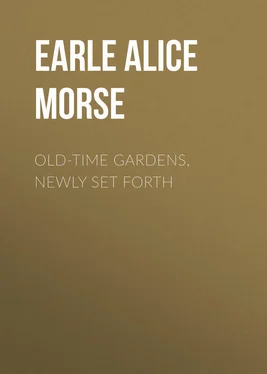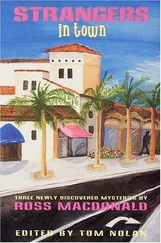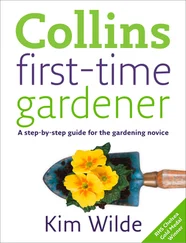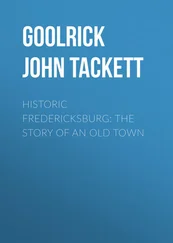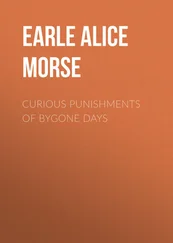Alice Earle - Old-Time Gardens, Newly Set Forth
Здесь есть возможность читать онлайн «Alice Earle - Old-Time Gardens, Newly Set Forth» — ознакомительный отрывок электронной книги совершенно бесплатно, а после прочтения отрывка купить полную версию. В некоторых случаях можно слушать аудио, скачать через торрент в формате fb2 и присутствует краткое содержание. Жанр: foreign_antique, foreign_prose, на английском языке. Описание произведения, (предисловие) а так же отзывы посетителей доступны на портале библиотеки ЛибКат.
- Название:Old-Time Gardens, Newly Set Forth
- Автор:
- Жанр:
- Год:неизвестен
- ISBN:нет данных
- Рейтинг книги:3 / 5. Голосов: 1
-
Избранное:Добавить в избранное
- Отзывы:
-
Ваша оценка:
- 60
- 1
- 2
- 3
- 4
- 5
Old-Time Gardens, Newly Set Forth: краткое содержание, описание и аннотация
Предлагаем к чтению аннотацию, описание, краткое содержание или предисловие (зависит от того, что написал сам автор книги «Old-Time Gardens, Newly Set Forth»). Если вы не нашли необходимую информацию о книге — напишите в комментариях, мы постараемся отыскать её.
Old-Time Gardens, Newly Set Forth — читать онлайн ознакомительный отрывок
Ниже представлен текст книги, разбитый по страницам. Система сохранения места последней прочитанной страницы, позволяет с удобством читать онлайн бесплатно книгу «Old-Time Gardens, Newly Set Forth», без необходимости каждый раз заново искать на чём Вы остановились. Поставьте закладку, и сможете в любой момент перейти на страницу, на которой закончили чтение.
Интервал:
Закладка:
The maze was not a thing of beauty, it was "nothing for sweetness and health," to use Lord Bacon's words; it was only a whimsical notion of gardening amusement, pleasing to a generation who liked to have hidden fountains in their gardens to sprinkle suddenly the unwary. I doubt if any mazes were ever laid out in America, though I have heard vague references to one in Virginia. Knots had been the choice adornment of the Tudor garden. They were not wholly a thing of the past when we had here our first gardens, and they have had a distinct influence on garden laying-out till our own day.
An Elizabethan poet wrote: —
"My Garden sweet, enclosed with walles strong,
Embanked with benches to sitt and take my rest;
The knots so enknotted it cannot be expressed
The arbores and alyes so pleasant and so dulce."
These garden knots were not flower beds edged with Box or Rosemary, with narrow walks between the edgings, as were the parterres of our later formal gardens. They were square, ornamental beds, each of which had a design set in some close-growing, trim plant, clipped flatly across the top, and the design filled in with colored earth or sand; and with no dividing paths. Elaborate models in complicated geometrical pattern were given in gardeners' books, for setting out these knots, which were first drawn on paper and subdivided into squares; then the square of earth was similarly divided, and set out by precise rules. William Lawson, the Izaak Walton of gardeners, gave, as a result of forty-eight years of experience, some very attractive directions for large "knottys" with different "thrids" of flowers, each of one color, which made the design appear as if "made of diverse colored ribands." One of his knots, from A New Orchard and Garden 1618, being a garden fashion in vogue when my forbears came to America, I have chosen as a device for the dedication of this book, thinking it, in Lawson's words, "so comely, and orderly placed, and so intermingled, that one looking thereon cannot but wonder." His knots had significant names, such as "Cinkfoyle; Flower de Luce; Trefoyle; Frette; Lozenge; Groseboowe; Diamond; Ovall; Maze."
Gervayse Markham gives various knot patterns to be bordered with Box cut eighteen inches broad at the bottom and kept flat at the top – with the ever present thought for the fine English linen. He has a varied list of circular, diamond-shaped, mixed, and "single impleated knots."
These garden knots were mildly sneered at by Lord Bacon; he said, "they be but toys, you see as good sights many times in tarts;" still I think they must have been quaint, and I should like to see a garden laid out to-day in these pretty Elizabethan knots, set in the old patterns, and with the old flowers. Nor did Parkinson and other practical gardeners look with favor on "curiously knotted gardens," though all gave designs to "satisfy the desires" of their readers. "Open knots" were preferred; these were made with borders of lead, tiles, boards, or even the shankbones of sheep, "which will become white and prettily grace out the garden," – a fashion I saw a few years ago around flower beds in Charlton, Massachusetts. "Round whitish pebble stones" for edgings were Parkinson's own invention, and proud he was of it, simple as it seems to us. These open knots were then filled in, but "thin and sparingly," with "English Flowers"; or with "Out-Landish Flowers," which were flowers fetched from foreign parts.
The parterre succeeded the knot, and has been used in gardens till the present day. Parterres were of different combinations, "well-contriv'd and ingenious." The "parterre of cut-work" was a Box-bordered formal flower garden, of which the garden at Hampton, Maryland (pages 57, 60, and 95), is a striking and perfect example; also the present garden at Mount Vernon (opposite page 12), wherein carefully designed flower beds, edged with Box, are planted with variety of flowers, and separated by paths. Sometimes, of old, fine white sand was carefully strewn on the earth under the flowers. The "parterre à l'Anglaise" had an elaborate design of vari-shaped beds edged with Box, but enclosing grass instead of flowers. In the "parterre de broderie" the Box-edged beds were filled with vari-colored earths and sands. Black earth could be made of iron filings; red earth of pounded tiles. This last-named parterre differed from a knot solely in having the paths among the beds. The Retir'd Gard'ner gives patterns for ten parterres.
The main walks which formed the basis of the garden design had in ancient days a singular name – forthrights; these were ever to be "spacious and fair," and neatly spread with colored sands or gravel. Parkinson says, "The fairer and larger your allies and walks be the more grace your garden should have, the lesse harm the herbes and flowers shall receive, and the better shall your weeders cleanse both the bed and the allies." "Covert-walks," or "shade-alleys," had trees meeting in an arch over them.
A curious term, found in references to old American flower beds and garden designs, as well as English ones, is the "goose-foot." A "goose-foot" consisted of three flower beds or three avenues radiating rather closely together from a small semicircle; and in some places and under some conditions it is still a charming and striking design, as you stand at the heel of the design and glance down the three avenues.
In all these flower beds Box was the favorite edging, but many other trim edgings have been used in parterres and borders by those who love not Box. Bricks were used, and boards; an edging of boards was not as pretty as one of flowers, but it kept the beds trimly in place; a garden thus edged is shown on page 63 which realizes this description of the pleasure-garden in the Scots Gard'ner : "The Bordures box'd and planted with variety of fine Flowers orderly Intermixt, Weeded, Mow'd, Rolled and Kept all Clean and Handsome." Germander and Rosemary were old favorites for edging. I have seen snowy edgings of Candy-tuft and Sweet Alyssum, setting off well the vari-colored blooms of the border. One of Sweet Alyssum is shown on page 256. Ageratum is a satisfactory edging. Thyme is of ancient use, but rather unmanageable; one garden owner has set his edgings of Moneywort, otherwise Creeping-jenny. I should be loth to use Moneywort as an edging; I would not care for its yellow flowers in that place, though I find them very kindly and cheerful on dull banks or in damp spots, under the drip of trees and eaves, or better still, growing gladly in the flower pot of the poor. I fear if Moneywort thrived enough to make a close, suitable edging, that it would thrive too well, and would swamp the borders with its underground runners. The name Moneywort is akin to its older title Herb-twopence, or Twopenny Grass. Turner (1548) says the latter name was given from the leaves all "standying together of ech syde of the stalke lyke pence." The striped leaves of one variety of Day Lily make pretty edgings. Those from a Salem garden are here shown.
We often see in neglected gardens in New England, or by the roadside where no gardens now exist, a dense gray-green growth of Lavender Cotton, "the female plant of Southernwood," which was brought here by the colonists and here will ever remain. It was used as an edging, and is very pretty when it can be controlled. I know two or three old gardens where it is thus employed.
Sometimes in driving along a country road you are startled by a concentration of foliage and bloom, a glimpse of a tiny farm-house, over which are clustered and heaped, and round which are gathered, close enough to be within touch from door or window, flowers in a crowded profusion ample to fill a large flower bed. Such is the mass of June bloom at Wilbur Farm in old Narragansett (page 290) – a home of flowers and bees. Often by the side of the farm-house is a little garden or flower bed containing some splendid examples of old-time flowers. The splendid "running ribbons" of Snow Pinks, on page 292, are in another Narragansett garden that is a bower of blossoms. Thrift has been a common edging since the days of the old herbalist Gerarde.
Читать дальшеИнтервал:
Закладка:
Похожие книги на «Old-Time Gardens, Newly Set Forth»
Представляем Вашему вниманию похожие книги на «Old-Time Gardens, Newly Set Forth» списком для выбора. Мы отобрали схожую по названию и смыслу литературу в надежде предоставить читателям больше вариантов отыскать новые, интересные, ещё непрочитанные произведения.
Обсуждение, отзывы о книге «Old-Time Gardens, Newly Set Forth» и просто собственные мнения читателей. Оставьте ваши комментарии, напишите, что Вы думаете о произведении, его смысле или главных героях. Укажите что конкретно понравилось, а что нет, и почему Вы так считаете.
